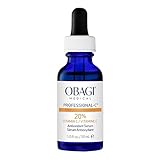when it comes to skincare, using the right products can make a world of difference for your skin’s health and appearance. However,even the best ingredients can sometimes cause irritation or reduce effectiveness when combined incorrectly. Understanding which skincare ingredients should never be mixed is essential to creating a routine that nourishes your skin without causing unwanted reactions. In this article, we’ll explore common ingredient combinations to avoid, helping you make informed choices and achieve the glowing, healthy complexion you deserve.
Common Skincare Ingredients That Can Cause Irritation When Combined
Last update on 2025-10-11 / Affiliate links / Images from Amazon Product Advertising API
When layering skincare products, certain ingredients can clash, causing increased sensitivity, redness, or even breakouts. One of the most common troublesome pairs is Retinol and Vitamin C. While both are powerful antioxidants, their pH requirements differ considerably. Vitamin C thrives in a low pH, acidic environment, whereas Retinol prefers a neutral to slightly acidic pH.Using them together can reduce their effectiveness and irritate the skin, especially for those with sensitive complexions.
additionally, combining exfoliating acids like AHA/BHA with Niacinamide can sometimes result in flushing or tingling sensations. Niacinamide is a skin-soothing ingredient, but it might break down in highly acidic conditions created by AHAs or BHAs, diminishing its benefits and potentially irritating the skin. Here’s a swift reference table highlighting some combinations to avoid for a calm, happy face:
| Ingredient 1 | Ingredient 2 | Potential Issue |
|---|---|---|
| Retinol | Vitamin C | Reduced effectiveness, irritation |
| AHA/BHA | Niacinamide | Tingling, flushing |
| Benzoyl Peroxide | Retinol | Dryness, redness |
| AHA/BHA | Retinol | Over-exfoliation, sensitivity |
Understanding Chemical Reactions Between Active Ingredients
When combining multiple skincare products, it’s essential to recognize that some active ingredients can interact negatively, reducing their effectiveness or causing irritation. These reactions occur at the molecular level, where certain compounds may cancel out each othre’s benefits or become unstable. For example, mixing Vitamin C (ascorbic acid) with Niacinamide can lead to the formation of nicotinic acid, which might cause redness and flushing.Similarly, pairing benzoyl peroxide with retinol can degrade the retinol, rendering it less effective while increasing skin sensitivity.
To help you navigate your skincare routine more effectively, here’s a quick overview of common problematic ingredient pairings:
- Vitamin C + Niacinamide: Potential irritation and diminished benefits.
- Benzoyl Peroxide + Retinol: Reduced retinol potency and increased sensitivity.
- AHAs/bhas + Retinol: Over-exfoliation risk leading to irritation.
- Vitamin C + AHAs/BHAs: Could cause excessive acidity, leading to irritation.
| Active Ingredient 1 | Active Ingredient 2 | Possible Reaction |
|---|---|---|
| Vitamin C | Niacinamide | Redness & reduced Efficacy |
| Benzoyl Peroxide | Retinol | Degradation & Sensitivity |
| AHAs/BHAs | Retinol | Over-exfoliation |
| Vitamin C | AHAs/BHAs | Excessive Acidity |
How to Safely Layer Your Skincare Products for Maximum benefits
When layering your skincare products, it’s essential to be mindful of the order and compatibility of active ingredients to avoid irritation or diminished effectiveness. A good rule of thumb is to apply products from the thinnest to the thickest texture,starting with toners or essences,followed by serums,then moisturizers,and finally sunscreens. Always wait a minute or two between each layer to let the product absorb fully, especially when dealing with potent actives like Vitamin C or retinol. This approach ensures that powerful ingredients penetrate properly without neutralizing each other.
Some combinations can cause more harm than good, so here are a few to avoid for safe and effective layering:
- Retinol & Vitamin C: These can cancel each other out and increase irritation.
- Benzoyl Peroxide & Retinol: Both are strong exfoliants that can over-dry and sensitize your skin.
- AHAs/BHAs & Vitamin C: Combining acids with Vitamin C may cause redness and inflammation.
- Niacinamide & Vitamin C: While often debated, best to use separately to avoid reducing their efficacy.
| Ingredients | Effect When Mixed | Recommended Usage |
|---|---|---|
| Retinol + Vitamin C | Reduced potency & irritation | Use Vitamin C in the morning,Retinol at night |
| Benzoyl Peroxide + Retinol | Dryness & redness | Alternate days or use at different times |
| AHAs/BHAs + Vitamin C | skin inflammation | Use exfoliants at night,Vitamin C in the morning |
| Niacinamide + Vitamin C | Potential reduced efficacy | Apply separately; morning and night |
Expert Tips on Avoiding Ingredient Clashes in Your Routine
When layering your skincare,it’s crucial to identify potential ingredient conflicts to maximize benefits and minimize irritation. Always be cautious with acids like AHAs (alpha hydroxy acids) and BHAs (beta hydroxy acids) — incorporating them alongside potent actives such as retinol or vitamin C can lead to sensitivity or undermine effectiveness.A good rule of thumb is to alternate these powerful ingredients between morning and night, or on separate days. This approach helps you avoid over-exfoliating while ensuring each component functions optimally.
Understanding how ingredients interact can save you from frustrating breakouts or irritation. For instance, combining benzoyl peroxide with retinol often causes dryness and redness, so it’s best to use these in different routines. Similarly, layering multiple exfoliating acids together is a recipe for disrupted skin barrier. To help you plan your routine better, here’s a quick reference table highlighting common problematic combinations:
| Ingredient 1 | Ingredient 2 | Why to Avoid |
|---|---|---|
| Retinol | Vitamin C | Poor stability; increased irritation risk |
| AHAs/BHAs | Retinol | Excessive exfoliation caused sensitivity |
| Benzoyl Peroxide | Retinol | Dryness and inflammation |
| Niacinamide | Vitamin C | Potential reduced efficacy (minor) |
- Tip: Patch test new combinations before applying to your entire face.
- Tip: Consult product pH levels — acidic and alkaline formulas often don’t mix well.
- Tip: Keep an ingredient journal to track how your skin responds over time.
Q&A
Q&A: What Skincare Ingredients Should You Avoid Mixing?
Last update on 2025-10-11 / Affiliate links / Images from Amazon Product Advertising API
Q1: Why is it important to know which skincare ingredients not to mix?
A1: mixing certain skincare ingredients can reduce their effectiveness or cause skin irritation, redness, and sensitivity. Understanding which ingredients don’t play well together helps you create a safe and effective skincare routine.Q2: Can I use retinol and vitamin C together?
A2: It’s generally best to avoid using retinol and vitamin C simultaneously occurring. Vitamin C is most effective at a lower pH (acidic), while retinol works better at a higher pH. Using both simultaneously might reduce their benefits and can increase irritation. Try using vitamin C in the morning and retinol at night.
Q3: Is it okay to combine AHAs/BHAs with retinol?
A3: Combining exfoliating acids like AHAs (glycolic acid) or BHAs (salicylic acid) with retinol can be too harsh for your skin, leading to redness, peeling, and sensitivity. If you want to use both, alternate nights or use acids in the morning and retinol at night, following up with sunscreen.
Q4: Can I mix niacinamide and vitamin C?
A4: Yes! Contrary to popular belief, niacinamide and vitamin C can be used together without reducing effectiveness. They can complement each other well, helping brighten skin and improve texture. If you have sensitive skin, you might introduce them gradually to monitor tolerance.
Q5: What about using benzoyl peroxide and retinol?
A5: Benzoyl peroxide and retinol are strong ingredients that can cause dryness and irritation when combined. It’s best to use benzoyl peroxide in the morning and retinol at night to avoid excessive skin sensitivity.
Q6: Can I layer acids and vitamin C at the same time?
A6: Layering multiple acids with vitamin C can overly acidify your skin, causing irritation. To minimize risk, avoid combining strong exfoliants like AHAs or BHAs directly with vitamin C. Instead, alternate their use between morning and evening or on different days.
Q7: Are there any ingredients that should never be combined?
A7: While most ingredient combos can be managed with timing and layering, avoid mixing strong exfoliants (AHAs/BHAs) with retinol or benzoyl peroxide in the same routine. Also, avoid using multiple strong actives at once if you have sensitive skin.
Q8: How can I introduce new ingredients safely?
A8: Start by patch testing and gradually incorporating one product at a time.pay attention to your skin’s reactions and avoid layering multiple active ingredients on the first try. always follow up with moisturizer and daily sunscreen.
Q9: What’s the general rule for applying skincare actives?
A9: Apply products from thinnest to thickest consistency, usually starting with cleansers, toners, serums (like vitamin C or niacinamide), treatments (acid exfoliants or retinol), moisturizers, and finally sunscreen. Alternate actives like retinol and acids between morning and night or different days to prevent irritation.
Q10: When in doubt, what should I do?
A10: Consult with a dermatologist or skincare professional to tailor a routine suited to your skin type and concerns. They can help you safely integrate active ingredients without compromising your skin’s health.
To Wrap It Up
Navigating the world of skincare ingredients can be tricky, but understanding which combinations to avoid is key to keeping your skin healthy and radiant. By steering clear of incompatible ingredients like retinol and vitamin C or benzoyl peroxide and AHAs, you can prevent irritation, reduce the risk of breakouts, and maximize the effectiveness of your routine. Remember, when in doubt, patch test new products and consult with a dermatologist for personalized advice.With a little knowlege and care, you’ll be well on your way to crafting a safe, effective skincare regimen that truly works for you.













